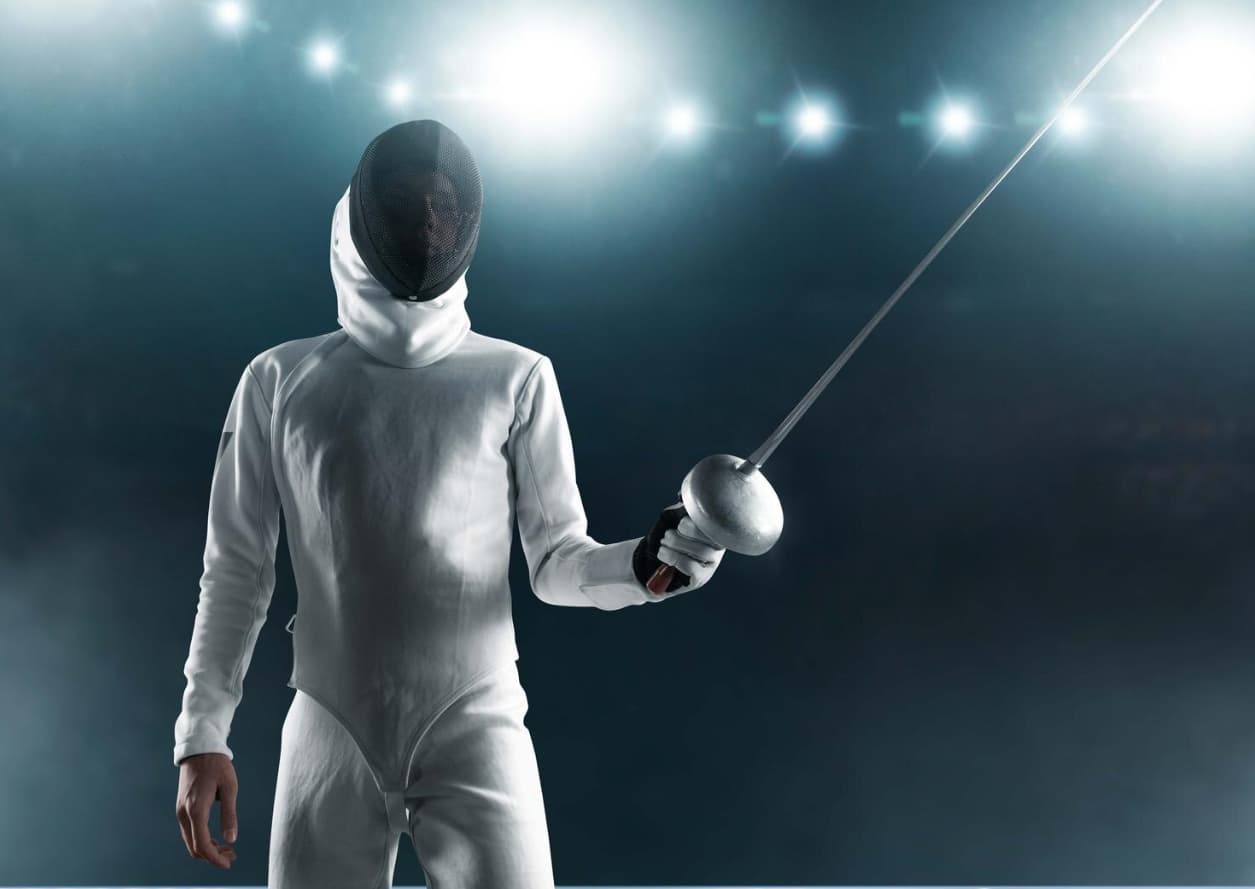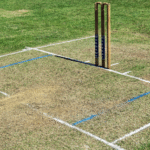Épée is a demanding sport that improves your physical fitness, sharpens your mind, and teaches discipline.
The best way to learn is to experience it for yourself – find a local fencing school and sign up for a beginner fencing class in Singapore.
A Beginner’s Guide to Epee Fencing

Épée is one of three competitive fencing weapons. It’s a stiff, thrusting weapon with a large hand guard. A point is scored only when the tip of the blade makes contact with the opponent.
The key differences of epee fencing are:
- Target area: The entire body is a valid target, from head to toe. This is different from foil (torso only) and sabre (waist up).
- Rules: There is no “right-of-way”. The first person to land a hit scores a point. If both fencers hit at the same time, both get a point. This simple rule makes the sport more tactical and less about speed.
Important Gear for Your First Lesson
When you first arrive at a fencing school, you don’t need to bring a trunk full of expensive equipment.
Most reputable clubs provide a full set of beginner gear for rent or as part of the introductory class fee. This allows you to experience the sport without a major financial commitment.
Here’s a detailed look at the basic equipment you’ll be using:
1. Mask
This is the most critical piece of safety gear. The mask protects your face, head, and neck from the tip of the blade.
It’s constructed with a strong wire mesh for visibility and is rated to withstand a specific amount of force. The mask is not only about safety; it’s what allows you to step onto the strip with confidence.
2. Jacket & Underarm Protector
The fencing jacket is made from a durable, puncture-resistant fabric. It fits snugly to your body to prevent a blade from snagging on loose material.
An underarm protector (or plastron) is worn under the jacket on your weapon arm side. This adds a crucial second layer of protection to a frequently targeted area and is a standard safety requirement.
3. Gloves
A fencing glove protects your weapon hand from hits. It’s made from a strong material and ensures a secure grip on your épée. A well-fitting glove is essential for maintaining control and responsiveness with your blade.
4. Breeches
These are the knee-length pants worn by fencers. They are made from the same durable material as the jacket and protect your legs. Breeches are designed to allow for a full range of motion, especially for the powerful lunge.
5. Épée
The school will provide a practice weapon for you. It’s specifically designed for training and is safe for beginners. This allows you to get a feel for the weapon’s weight and balance before you consider buying your own.
6. Athletic Clothing & Shoes
While the club provides the protective gear, you should wear comfortable athletic clothing underneath—like a t-shirt and athletic pants or leggings.
Avoid shorts and jeans as they restrict movement. You should also wear a pair of comfortable athletic shoes with good lateral support and a non-marking sole. You don’t need special fencing shoes at this stage; a good pair of tennis or volleyball shoes works perfectly.
Fundamental Skills & Stance
Before you can fence, you need to learn the basic positions and movements. These skills are the building blocks of every bout.
The en garde stance is your ready position and the foundation for all your movements.
Stand with your feet shoulder-width apart, knees bent, and your weight centered.
Your non-weapon arm should be extended for balance. This stance allows you to quickly move forward, backward, and side-to-side.
Footwork is also crucial for both offense and defense.
The most common movements are:
- Advance: A simple forward step.
- Retreat: A simple backward step.
- Lunge: An explosive forward movement that allows you to close distance and attack your opponent.
- Fleche: A faster, more aggressive attacking movement that resembles a running forward step.
- Lateral movement: Shifting to the left or right to change angles and evade an opponent’s attack.
Your first lessons will also introduce you to basic blade control:
- Point-in-line: A strong defensive position where you hold your blade straight out towards your opponent, threatening an attack.
- Parries: Defensive blocks used to deflect your opponent’s blade and prevent them from scoring.
- Ripostes: An immediate attack you make after you have successfully parried an opponent’s attack.
- Feints: A fake attack designed to provoke a reaction from your opponent, creating an opening for a real attack.
Épée Strategy
Épée is a game of patience and tactics. Since there is no right-of-way, winning is about out-thinking your opponent.
- Distance management: You must constantly adjust the space between you and your opponent to create an opportunity to attack or to stay out of range.
- Timing: Wait for the right moment to strike. Look for a mistake or a predictable pattern in your opponent’s movement.
- Counter-attacking: This is a common tactic in épée. A fencer tries to score a hit just before their opponent’s blade lands. This can lead to exciting exchanges and double touches.
Conclusion:
Épée is a sport that sharpens your mind and improves your physical fitness. It teaches discipline and strategy.
It hones your ability to make split-second decisions under pressure and teaches you to think several moves ahead, skills that are valuable both on and off the piste.
While it offers a great full-body workout that improves agility, balance, and coordination, its true reward lies in the mental challenge.
You’ll learn patience, discipline, and the art of staying calm in a high-stakes situation.





